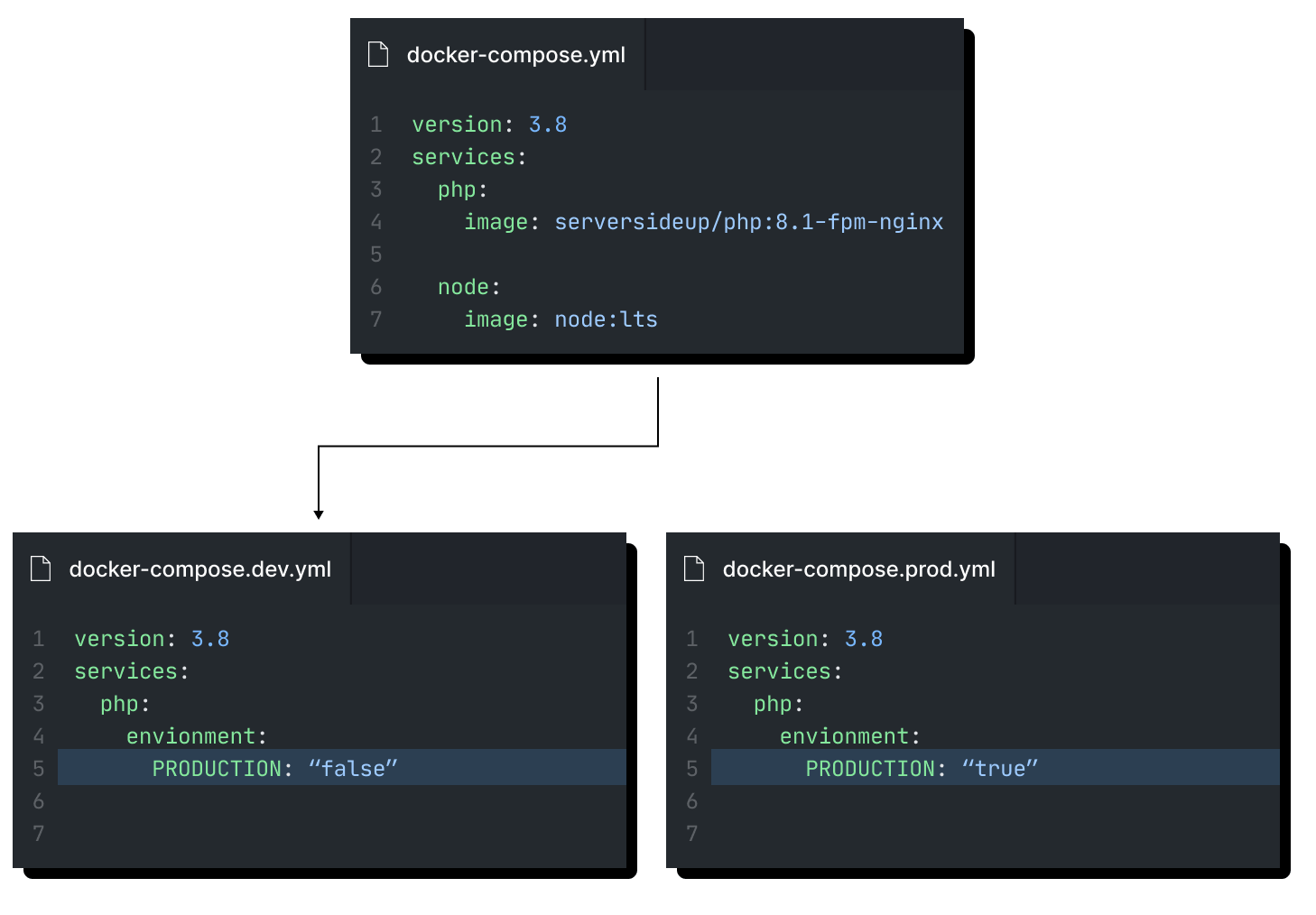How Spin Works
Spin is a collection of proven open source technologies delivered to you in a lightweight and simple experience. This document explains what technologies Spin uses, how it works, and how this tool can enable you to have a lot of power and freedom to self-host and distribute your applications.
Live Demo
Here is an example of how Spin works, specifically with creating and deploying a Laravel project.
What Spin Is Built On Top Of

At the core of Spin are:
- Docker Compose (used in local development)
- Docker Swarm Mode (used in production, staging, etc.)
- Ansible (used to ensure your server is configured correctly)
Templates we provide
Spin is designed with the entire development lifecycle in mind, so we do offer GitHub Actions templates when you run spin new to create a project, or spin init.
Other open source projects we use
Spin accesses and utilizes other open source projects to simplify your development lifecycle experience. The entire system is built on top of open source libraries, but here are a few notable ones to be aware of:
Ansible Collection
- Spin Ansible Collection - Used to provision and maintain your production server.
GitHub Actions
- serversideup/docker-build-action - A simplified syntax to build and publish your Docker images with GitHub Actions.
- serversideup/docker-swarm-deploy-github-action - A simplified syntax to deploy to Docker Swarm Mode via GitHub Actions.
Docker Images
- serversideup/php - PHP Docker images highly optimized to work with Laravel + Spin.
- serversideup/docker-ssh - A lightweight docker image that runs SSH. This is a fantastic method on using a secure SSH tunnel into your database cluster.
Why not just use these technologies directly?
Spin is designed to reduce the learning curve for delivering containerized applications with Docker. This is where be believe the 99% of people are. If you're looking to start a new project and deliver it quickly without breaking the bank, Spin is for you. Everything is designed to have your application disposable, repeatable, and scalable.
For some advanced users that are running massive server farms, you might want to stick to your existing tooling. Spin is focused on launching apps from the ground up with the ability to scale. In large clusters, you might need to write your own tooling to match your existing use case.
The good news is you don't need to use Spin everywhere. Spin is a structure just as much as it is a tool.
Important concepts
Spin's flexibility comes from embracing the Docker Compose Overrides (aka Docker Compose Extends) structure. We use a "base" docker-compose.yml file, then choose a file based on the environment.
Here is a visual of what the file structure looks like:

Docker natively selecting these files, but it is a huge pain to type out each time. This is what we would have to type to bring our project up.
What we would have to type with Docker Compose 😅
docker compose pull && docker compose -f docker-compose.yml -f docker-compose.dev.yml up
Here's how this command compares in Spin:
What we type with Spin 🥳
spin up
For a practical code example, here is what it would look like to
Looking at the image above, we c docker-compose.yml file.
Further example
To see this from a code perspective, let's take a look at this:

If we were to run `spin up`, our expected result of Docker Compose that we'll run
version: 3.8
services:
php:
image: serversideup/php:8.1-fpm-nginx
environment:
PRODUCTION: "false"
node:
image: node:lts
You can see the files are merged intelligently so you can manage infrastructure like an "object" in programming.
Spin Syntax
You'll notice Spin follows the same syntax as the tool it's built on top of. For example, spin up runs docker compose up and supports any CLI option that docker compose up supports.
This is intentional by design because we really hate it when tools introduce their own domain specific language on top of other tools. Spin is here to make your process easy and centralized. We follow the design of the other tools we built from so it's easy for you to find developers that are familiar with the technology, find support online, and scale easily from Spin on.
Framework Agnostic
One other thing that we spent a lot of time on is writing everything so Spin is framework agnostic. Containerizing applications gives you incredible power to deliver your application anywhere like never before. We'd be fools if we built Spin to work with just one framework only. The power of Docker enables us to give you quality development environments to all developers (regardless if they are running Mac, Windows, or Linux).
You'll notice Spin is written in vanilla Bash. Yup... you read that correctly. Many people think we're crazy for doing this and they've suggested "X", "Y", and "Z" would have been a better programming language, but the biggest reason why we did this was so we could deliver an experience with no additional development dependency.
We intentionally chose to support Bash V3 so MacOS users can just download it and run it. There's no need for the user to figure out how to install Ruby, upgrade Bash, etc. It just works out of the box.

